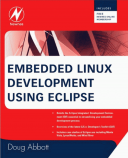Книга: Embedded Linux development using Eclipse
9.2.3 Debugging With Luminosity
9.2.3 Debugging With Luminosity
LynuxWorks doesn’t support any kind of simulator for LynxOS, so you need a real target running LynxOS in order to test code. That’s the bad news. The good news is that just about any old 486 box you have lying around as a doorstop should work as a target. There is a tool to build a bootable CD with a LynxOS kernel image.
Luminosity uses a proprietary method for managing remote targets. Select LynuxWorks?Set Remote Target to bring up the Targets view, which is initially empty. Right-click in the Targets view and select New Target. This brings up the dialog of Figure 9.5. The Connection tab is fairly self-explanatory. Once you enter the parameters, the Validate button will attempt to resolve the target IP address and then check all connection types that Luminosity uses.

Figure 9.5: Remote Target Configuration.
The Authentication tab lets you enter a user name and password, and a directory on the target where application binaries will be downloaded. The Utilities tab sets network protocol parameters and can usually be left at default values. If you only define one target, it becomes the default.
Luminosity defines its own launch configuration for LynuxWorks C/C++ projects. The only tab that differs from the standard C/C++ Local Application launch configuration is the Debugger tab (Figure 9.6). This sets parameters for remote debugging on the default target.

Figure 9.6: Launch configuration debugger tab.
Basic debugging is essentially the same as in standard Eclipse. LynuxWorks does add a couple of its own interesting debug features.
- 9.2 LynuxWorks — Luminosity
- Chapter 12. Debugging your scripts
- Using Double Quotes to Resolve Variables in Strings with Embedded Spaces
- Drawbacks with restore
- Debugging, a necessity
- Bash debugging tips
- System tools used for debugging
- Iptables debugging
- Other debugging tools
- 7. AGGREGATION WITH INDEPENDENT WORKS
- Конструкция with-do
- 3. Hexadecimal – the way we communicate with micros




